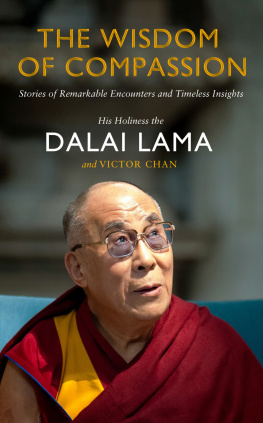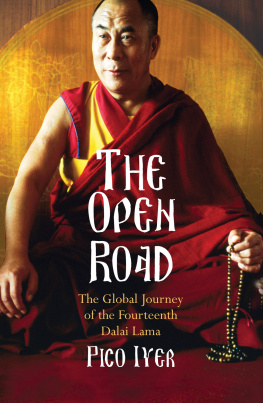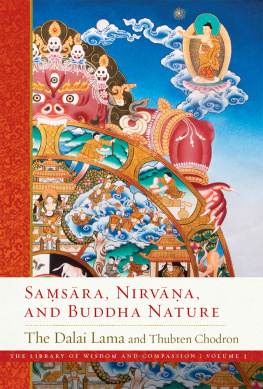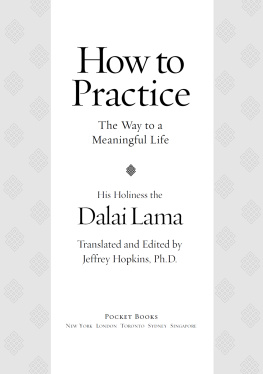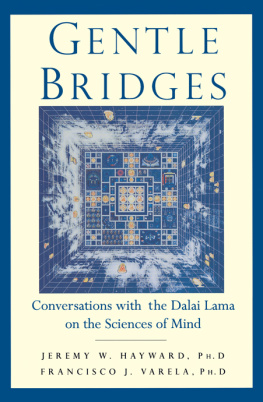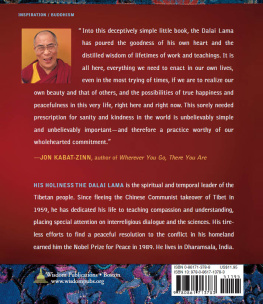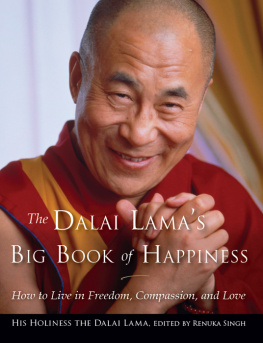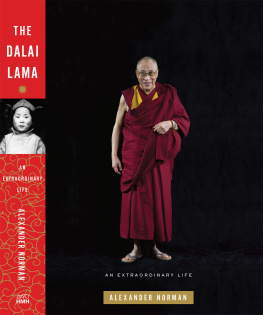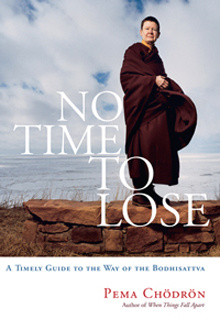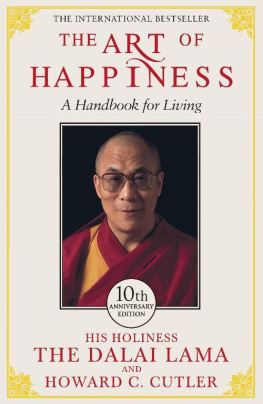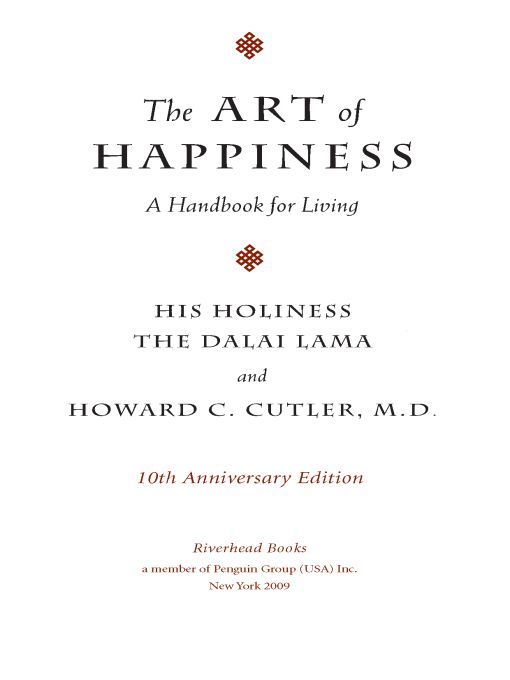Table of Contents
Dedicated to the Reader:
May you find happiness.
PREFACE TO THE 10TH ANNIVERSARY EDITION
by His Holiness the Dalai Lama

I am very happy to learn that the publisher of The Art of Happinesswhich I cowrote with my old friend, the American psychiatrist Howard Cutleris bringing out a tenth anniversary edition of the book. Those who have read the book will know that it was the result of many hours of discussion, with Howard representing the current scientific perspective and me representing the Buddhist understanding of the issues pertaining to mental health and human well-being. So when the book was received well by the general public, I felt a deep sense of satisfaction since this indicated that our labor had made some contribution towards others happiness and well-being. Though each of us, the two authors, came from different perspectives, we always endeavored to bring our discussion to the basic human level, the level where distinctions between peoplegender, race, religion, culture, and languagebreak down. At this fundamental level, we are all the same; each one of us aspires to happiness and each one of us does not wish to suffer. This is our most fundamental reality. And on this level, the problems that we each face as human beings remain the same. Given this belief, whenever I have the opportunity to engage with the general public, I always try to draw peoples attention to this fundamental sameness of the human family and the deeply interconnected nature of our existence and welfare. I also share my belief that as a species we need to ground our interaction with fellow human beings and the world around us on recognition of these profound yet simple truths.
Today, a decade after the publication of The Art of Happiness, I am heartened to see that the topic of human happiness is attracting increasing levels of interest and serious research, even from the scientific community. There is also a growing recognition within the wider community, as well as a growing body of scientific evidence, that confirms the close connection that exists between our own states of mind and our happiness. Many years ago I wrote: If you want others to be happy practice compassion; and if you want yourself to be happy practice compassion. The Buddhist tradition has, like many of the worlds great spiritual traditions, exhorted us to live our lives compassionately. These spiritual traditions teach us to feel connected with our fellow beings and with the world we live in. They celebrate service to others as one of the highest virtues. Today, growing scientific data confirm this insight. Researchers on human happiness identify compassionate service to others as one of the key characteristics shared by many of the worlds happiest people. To me this makes perfect sense. When we help others, the focus of our mind assumes a broader horizon within which we are able to see our own petty problems in a more realistic proportion. What previously appeared to be daunting and unbearable, which is what often makes our problems so overwhelming, tends to lose its intensity.
The question is: Can we cultivate ourselves to be more compassionate? If so, how do we do it? Again, here I believe that profound recognition of the fundamental sameness of the human family and the deeply interconnected nature of our well-being are crucially important. When you feel connected with others you are able to open your heart, which I often call our inner door, and reach out to others. In doing so, you acquire a deep sense of security and trust and a true sense of freedom. A key element of this process entails cultivating some degree of greater awareness with respect to ones own mental states, especially ones emotions and moods. With these practices you can lay a strong foundation within you, a kind of anchor that provides a true inner home. This is the basis of true inner happiness, a genuine wellspring of joy. Researchers often wonder about the causal sequence between compassion and happiness. They ask: Is it the case that compassionate people are happier or are happy people more compassionate? On a practical level, I suppose, which comes first does not really matter. What matters is that we can cultivate both. In my own Buddhist tradition, numerous mental trainings are offered to systematically cultivate greater compassion and well-being. Today, with new insights from the field of neuroscience, especially with the discovery of brain plasticity, we know that the human brain is highly amenable to change and adaptation, even at advanced ages, as in ones seventies, as I am now. The revered thirteenth-century Tibetan master Sakya Pandita once said, Seek learning even if you were to die tomorrow.
In The Art of Happiness, we attempted to present to the reader a systematic approach to achieving greater happiness and overcoming lifes inevitable adversities and suffering. Our approach combines and integrates the best of East and Westthat is, Western science and psychology on the one hand and Buddhist principles and practices on the other. Our aim has been to share with others the conviction that there is a lot each of us can do to achieve greater happiness in our lives and, more important, to draw attention to the tremendous inner resources that are at the disposal of each of us. Given these central aims, the main approach in this book has been to explore ways and means towards greater happiness and joy in life from the perspective of an individual human being.
Over the last ten years, Howard and I have continued our conversations, taking the discussion to the level of wider society and how the external environment impacts our happiness. In the course of these conversations we have explored a number of the key principles and practices that can play an important role in ones personal quest for happiness. And more important, we have explored some of the challenging questions pertaining to how one can best apply these principles and practices in the context of the wider society. How can one maintain happiness in todays troubled and challenging world? How can one apply the principles of The Art of Happiness in dealing with problems and suffering in the world? What are the roots of violence, on both the individual level and the societal level? How can one learn to undo these sources of violence? How can one sustain hope in humanity in the face of human violence and suffering? These are a few of the questions we strove to address in our discussions. During this decade, I have also continued with my ongoing dialogues with scientists, especially from the fields of cognitive and affective neuroscience as well as psychology, so that a greater convergence could be brought between the age-old insights of my own Buddhist tradition and modern science. I hope the fruits of this exploration as well as my ongoing conversations with Howard will evolve into a new book so that others can share in these exchanges, which I have personally found deeply enriching.
INTRODUCTION TO THE 10TH ANNIVERSARY EDITION
The Art of Happiness: Looking Back and Looking Forward
by Howard C. Cutler, M.D.
THE BEGINNING
A



